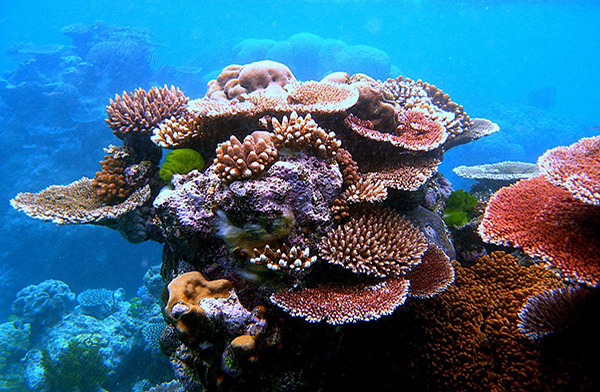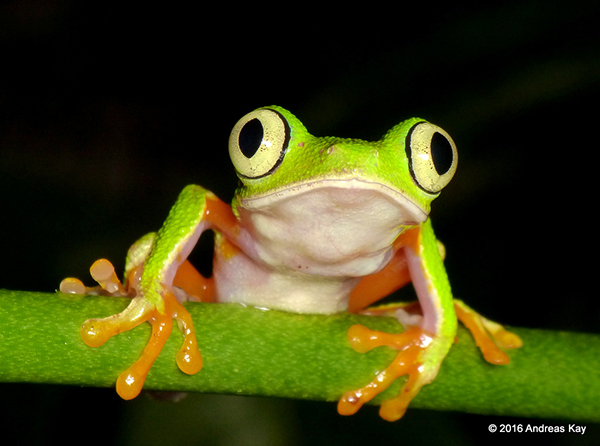| revcom.us
The Planet Cannot Survive Four More Years of Trump!
Part 1: The Great Barrier Reef and the Amazon

Bleached coral, the Great Barrier Reef
Editors’ Note: We received the following from a reader—the first in a series on the destruction of the planet’s ecosystems that has been brought to new levels of devastation and danger under the Trump/Pence regime.
Whole regions of the planet—ecosystems—are on the verge of collapse as a result of climate change driven by emissions of fossil fuels and other forms of ecological destruction due to the capitalist-imperialist system.
An ecosystem is an interdependent region that includes all the living organisms in an area (from bacteria to humans), as well as the physical environment. Taking out individual species and groups of species can unravel ecosystems, some of which have existed in relative balance for thousands or even millions of years.
Ecosystems impact each other and the entire global system. Collapses can cascade like dominoes. We are confronted not only with the collapse of whole ecosystems but the cascading impact on Earth’s global ecosystem and the transformation to a different kind of planet that could even threaten human existence.
Several recent studies have found that ecosystem collapse could happen sooner than scientists had previously estimated. The studies argue that once the loss of a large ecosystem, such as the Amazon, reaches a certain level, collapse may happen even more quickly than in a small system. John Dearing, who led one of the recent studies, said: “The messages here are stark. We need to prepare for changes in our planet’s ecosystems that are faster than we previously envisaged.”
Capitalism has ravaged and destroyed the environment since its beginnings, and in recent decades this has threatened the natural underpinnings of human society. Trump has thrown gasoline on an already raging fire. He has pulled out of the Paris climate accord. He dismisses the science of global warming. He is expanding extraction of fossil fuels, eliminating restrictions on coal power plants and automobile emissions, mocking green alternatives to fossil fuels, auctioning off pristine wilderness to oil companies, and much more. And all of this has global impact.
This series will look at parts of the world that are under imminent threat.
1. Great Barrier Reef

A variety of corals form an outcrop on Flynn Reef, part of the Great Barrier Reef near Cairns, Queensland, Australia, 2010. Photo: Toby Hudson (Wikimedia Commons)

Dead staghorn coral killed by bleaching on the northern Great Barrier Reef, November 2016. Photo: Greg Torda, ARC Centre of Excellence for Coral Reef Studies/Creative Commons
The Great Barrier Reef is the world’s largest single structure made of living organisms. It has one of the richest diversities of species on the entire planet with 1,500 species of fish, 400 species of coral, 4,000 species of mollusks, and 240 species of birds.
In 2020, for the third time in the last five years, the Great Barrier Reef has been damaged by coral bleaching. Rising ocean temperatures cause vibrant reefs to become ghostly skeletons. It can take years or decades for a coral to recover from a single bleaching, and repeated bleaching often kills reefs. The frequency of coral bleaching has increased dramatically over the last 40 years.

Map of the Great Barrier Reef. Rice University, Coral Reefs Blog.
About 50 percent of all corals that make up the Great Barrier Reef are dead. A single major bleaching in 2016 killed 33 percent of corals. The bleaching in 2020 was significant because for the first time the southern reef, where waters are cooler, was damaged. The full extent of loss from this recent bleaching will not be known until scientists explore the area next year.
“We are all in shock really at how quick this has happened. Three severe bleaching events in five years is not something we anticipated happening until the middle of the century,” said Terry Hughes, director of the ARC Center of Excellence for Coral Reef Studies at James Cook University.
Other coral reefs are also in danger of imminent collapse. The United Nations’ Intergovernmental Panel on Climate Change (IPCC) estimates that a 1.5 degree Celsius rise (over pre-industrial levels) in global temperatures will kill 90 percent of the world’s coral. We are currently at 1 degree and, at current rates, we will reach 1.5 degree within a decade. Even if all burning of fossil fuels stopped today, the ocean would continue to warm for 30-40 years.
Coral reef ecosystems are foundational to the life and health of ocean ecosystems. In his important book The Uninhabitable Earth, author David Wallace-Wells speaks to the importance of the coral reefs to oceans as a whole: “Reefs support as much as a quarter of all marine life, and provide food and income for half a billion people.” (p. 96)
2. Amazon Rainforest

Amazon rainforest

Endangered species of tree frog (Agalychnis hulli) from Reserva Ecológica Tamandua, Ecuador. One of many unique species in the Amazon. Photo: Andreas Kay Flikr/Creative Commons
The Amazon rainforest is often called the lungs of the planet because it puts so much oxygen into the atmosphere. It is one of the most biologically diverse regions of the world, home to one in ten known species of plants and animals. It contains one-fifth of Earth’s supply of fresh water. It also absorbs about five percent of the carbon dioxide that is emitted annually from the burning of fossil fuels.
Since 1970, more than one-fifth of the land in the Amazon has been lost, much of it by fires deliberately set to clear ground for ranching and gold mining. The burning of the Amazon has been enabled by Brazil’s President Jair Bolsonaro (a close ally of Trump). International financial institutions, such as BlackRock, are major investors involved in this.

Children flee a fire in the Amazon.

Satellite view of Amazon rainforest in December 2019. By 2020 between 15 and 17 percent of the Amazon rainforest was destoyed by fires. More than 20% of the rainforest has been clearcut. If the amount of cleared forest land reaches 25%, there may not be enough trees cycling moisture through the rainforest to keep it alive
In 2019, fires in the Amazon sparked international outrage. The 2020 fires have been even larger. In September, satellites recorded a 61 percent rise compared with the same month in 2019.
Reduction in the size of the land in the Amazon threatens the very existence of the entire rainforest. Some researchers estimate that with continued global warming (which is changing the climate required by the forests) and continued fires, we could soon reach a point where the destruction cannot be stopped.
The results of a collapse of the Amazon rainforest would be horrific. Tens of thousands of species would become extinct, weather patterns over much of South America would change. Thirty million people may be forced to migrate, including three million indigenous people. And this will greatly accelerate the process of climate change globally as tens of billions of tons of carbon held in the rainforest would be released into the atmosphere.
Trump’s Threat to the Planet
The capitalist-imperialist system cares nothing for the rich diversity of life on the planet, the complex web of systems that make up the natural world. If it cannot turn it into money and use it to dominate its rivals it has no value. To cite a recent example, a recent United Nations report, Global Biodiversity Outlook 5, found that of 20 biodiversity targets set by world leaders in Aichi, Japan, 10 years ago, not a single one has been met!
The Trump/Pence regime represents an immediate and urgent threat. As revcom.us has said, “If fascism fully takes hold in the most powerful country in the world, this could lead to a catastrophe from which humanity may not be able to recover.” A second Trump presidency would pour even more gasoline on a planet already “on fire” and headed toward catastrophe due to global climate change and its destructive impacts.
We must stop this catastrophe. We must be in the streets in sufficient numbers to force the Trump/Pence regime from office and prevent it from consolidating fascism. And we need to overthrow the capitalist-imperialist system and put in place a system of socialism moving onto communism that is based on, among other things, “Protecting, preserving, and enhancing the ecosystems and biodiversity of the planet for current and future generations.” (from the Constitution for the New Socialist Republic in North America, authored by Bob Avakian)
Part 2 of this series will look at the Arctic and boreal forests.
Get a free email subscription to revcom.us:


